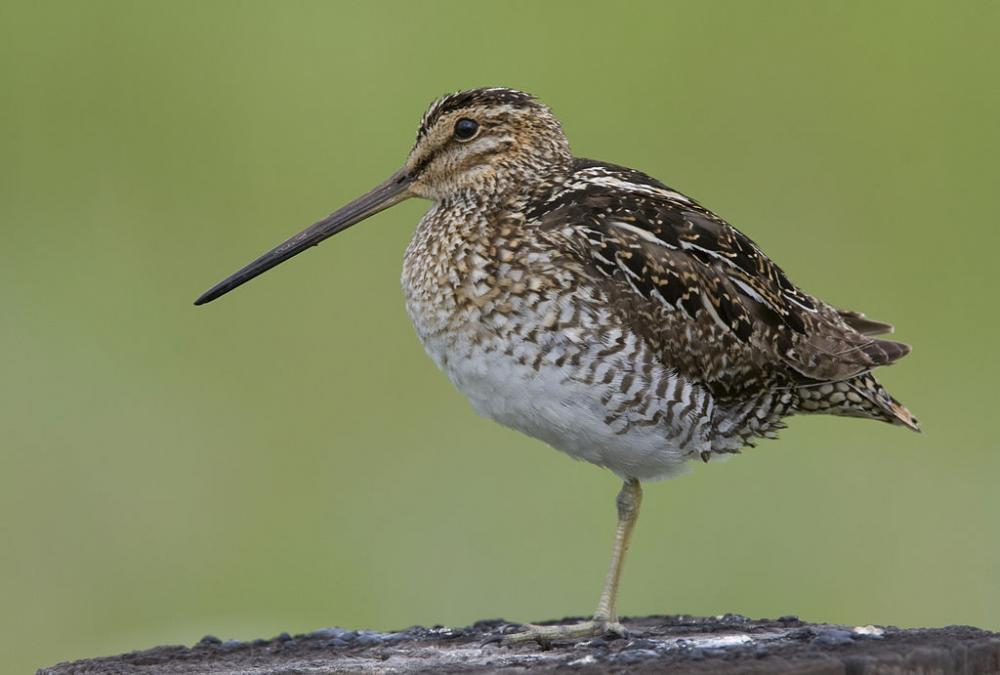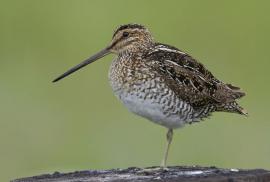Guide to Boreal Birds
Overview
This species, an upland bird, is one of the few shorebirds that can still be hunted legally. It stays well hidden in ground cover, flushes abruptly, and zigzags sharply in flight, all habits that make it difficult to shoot and therefore a favorite among hunters. In addition to the alarm note described in the Voice section, these birds have a variety of calls heard only on the breeding ground, and they perform a spectacular aerial territorial display in which the feathers of the tail produce an eerie whistling sound. Although the Wilson's Snipe generally migrates in flocks at night, during the day the birds scatter and usually feed alone. They seek food early in the morning and in late afternoon, and seem to be more active on cloudy days. They use their long bills to probe deeply in the mud to find small animals. The New World snipe was recently recognized as a species distinct from the Common Snipe (G. gallinago), a mainly Eurasian species that occurs in North America only rarely.
Description
10 1/2" (27 cm). A long-billed, brownish shorebird with striped head and back, white belly, and rust in tail. Usually seen when flushed from edge of a marsh or a pond. Flight fast and erratic.
Voice
A sharp rasping scaip! when flushed.
Nesting
4 pale olive-brown eggs, spotted with black, concealed in a grass-lined depression in a grass tussock in a marsh.
Habitat
Freshwater marshes, ponds, flooded meadows, and fields; more rarely in salt marshes.
Range/Migration
Breeds from northern Alaska and Canada south to California, southwestern states, and New Jersey. Winters north from tropical America to British Columbia, northern Gulf Coast states, and Virginia.



